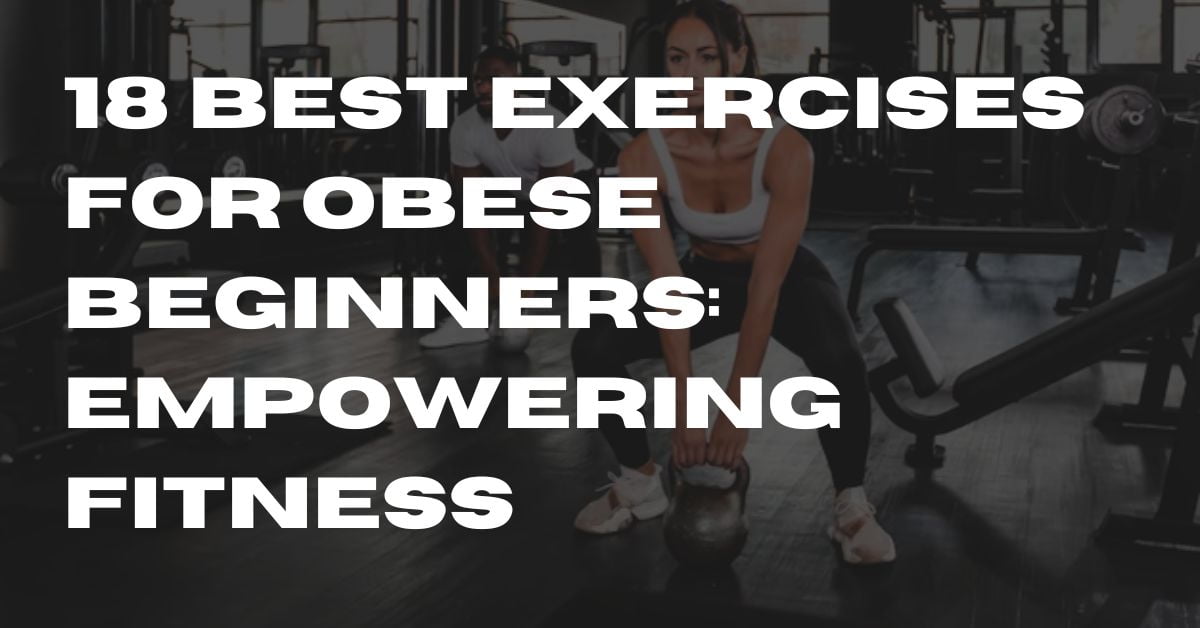Eager to embark on an exhilarating journey toward a healthier self?
If you find yourself as a novice in the realm of fitness, yearning to embrace a path of wellness, then you’ve certainly come to the perfect destination.
We are fully aware that stepping onto this route might instill a sense of trepidation, but be at ease, as we are here to provide unwavering guidance coupled with expert counsel.
Within this composition, we have meticulously curated a selection of 18 exercises meticulously tailored for individuals akin to your situation.
These exercises transcend the notion of pushing one’s boundaries; instead, they revolve around embracing advancement, commemorating each triumph, and forging an enduring route toward a more joyful and healthier existence.
So, let’s fasten those athletic shoes and submerge ourselves into the realm of exercises meticulously crafted with your journey as the focal point.
Table of Contents
Why Exercise Matters for Obese Beginners
Imagine this scenario: you’re standing at the intersection of a fresh start, a journey toward an improved version of yourself.
The truth is, this voyage holds a remarkably potent key – the enchanting wand known as “exercise.”
But you might be pondering, why does exercise hold such significance, particularly for someone like you, taking those initial strides as a beginner struggling with obesity?
Let’s break it down. Envision your heart rhythmically pumping, your muscles in motion, and your spirits ascending.
Exercise isn’t just about perspiration and calorie burn; it’s about rewiring both your physical form and mental state for the extraordinary.
And guess what? Science is fully supportive of this notion.
Research unveils that even moderate amounts of exercise can set off ripples of positive transformation within your body.
Your heart, that robust powerhouse, gains strength with every step you take.
Cardiovascular activities like brisk walking, stationary cycling, and water aerobics possess the potential to diminish your risk of heart disease, enhance blood circulation, and amplify your endurance.
Think of it as a rejuvenation session for your heart, setting it on a course toward lasting vitality.
But let’s not overlook the captivating dance your body engages in with its metabolism. Exercise stokes your metabolic engine, facilitating a more efficient calorie burn.
And guess what? Those resilient fat cells you’ve been eyeing? They’re not impervious. Research highlights that consistent physical activity can cause those fat cells to shrink, translating to fat loss and improved weight management.
Oh, and have we mentioned the mood makeover? Exercise unleashes endorphins – those delightful chemicals that send waves of positivity and joy coursing through your body.
You’re not only shedding calories; you’re shedding stress, anxiety, and the burdens of a taxing day. It’s akin to a natural mood enhancer, readily available whenever you need it.
Advantages of Exercise for Novice Individuals with Obesity
Picture yourself at the crossroads of a transformative journey – one promising a healthier, more joyful you.
This expedition commences with a single stride, and that stride is exercise. As a beginner grappling with obesity, you might wonder, “Why does exercise carry such weight for someone like me?”
Let’s delve into six compelling reasons supported by science and insights from real-life experts, reasons that will ignite your motivation to take that initial step toward a better you.
A Stronger Heartbeat:
Your heart stands as your body’s engine, and exercise injects it with significant vigor.
The American Heart Association attests that regular physical activity can decrease the risk of heart disease and stroke, conditions more prevalent among obese individuals.
Experts such as Dr. Robert Sallis, a renowned sports medicine physician, stress that exercise fortifies your heart muscle and enhances blood circulation.
Activities like brisk walking, swimming, and cycling offer gentle methods to invigorate your heart without overwhelming your body.
Diminished Fat Cells and Weight Management:
The pursuit of shedding excess weight is no secret, and exercise plays a pivotal role in this endeavor.
A study documented in the American Heart Journal reveals that exercise not only burns calories but also prompts fat cells to release triglycerides, leading to fat reduction.
Amanda Dale, a fitness blogger, and personal trainer, underscores that weight management extends beyond mere pounds – it encompasses overall health and well-being enhancement.
The Organic Uplifter of Mood:
Familiar with the “runner’s high”? It’s real, and not confined to runners alone. Engaging in exercise prompts your body to release endorphins, natural mood enhancers.
Dr. Wendy Suzuki, a neuroscientist, elucidates that exercise triggers the release of dopamine and serotonin, neurotransmitters responsible for feelings of happiness and relaxation.
Thus, post-workout radiance encompasses not only the physical but also the mental.
Cultivating Strength and Flexibility:
Subtle strength training serves as your secret weapon. Dr. Miriam Nelson, a distinguished exercise scientist, emphasizes that even modest strength exercises bolster muscle mass and bone density.
Simple actions like bodyweight squats, adapted push-ups, and seated leg lifts wield transformative power.
Esteemed fitness blogger Sarah Dussault suggests that these exercises progressively amplify your strength, rendering daily activities easier while minimizing injury risks.
Elevating Confidence and Self-Esteem:
Fitness transcends physical transformations; it’s a game of confidence. Osha Key, an expert blogger and weight loss coach, expounds that every minor achievement – completing a workout or attaining a fitness milestone – elevates self-esteem.
As an obese novice, each step you take transforms into a victory, fueling your belief in your capacity to conquer challenges.
Enhanced Sleep Quality and Energy Levels:
Quality sleep is a treasure, and exercise helps unearth it. Insights from the National Sleep Foundation indicate that consistent physical activity enhances sleep quality, facilitating faster sleep onset and deeper sleep cycles.
18 exercises for obese beginners
Brisk Walking
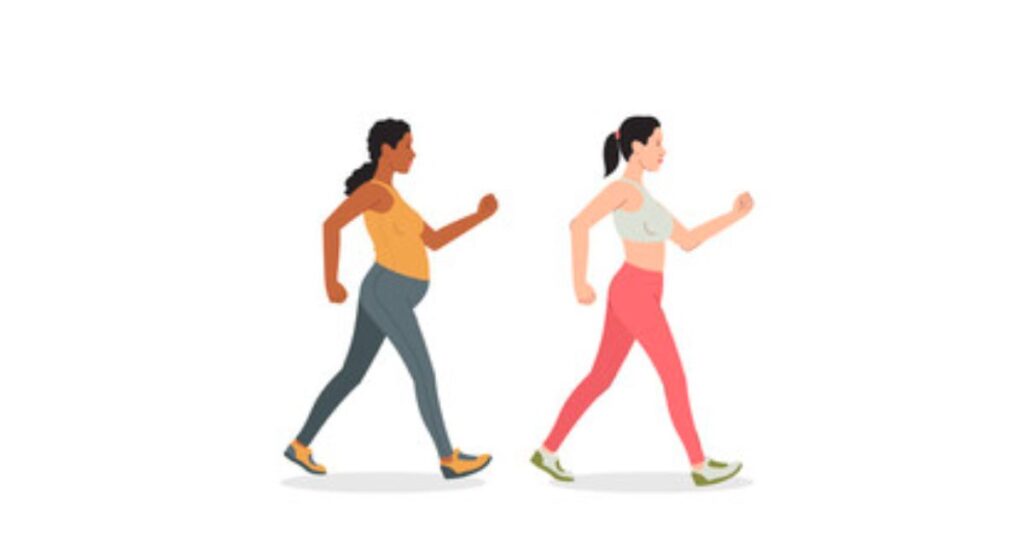
Imagine this: a simple, enjoyable exercise that’s also a powerful game-changer. That’s brisk walking for you. As an obese beginner, it’s your welcoming path into the world of fitness, and here’s why it’s incredible.
Brisk walking isn’t just a stroll in the park; it’s a heart-pumping adventure. Experts like Dr. John Jakicic, a weight management specialist, highlight that walking is a low-impact activity that gets your heart rate up, strengthens your cardiovascular system, and burns calories.
And guess what? You don’t need fancy equipment or a gym membership – just a good pair of shoes and your determination.
But it’s not just about physical gains. It’s a mental oasis too. Dr. Wendy Suzuki, a neuroscientist, explains that walking outdoors boosts your mood and reduces stress, thanks to the release of those happiness-inducing neurotransmitters.
Stationary Cycling
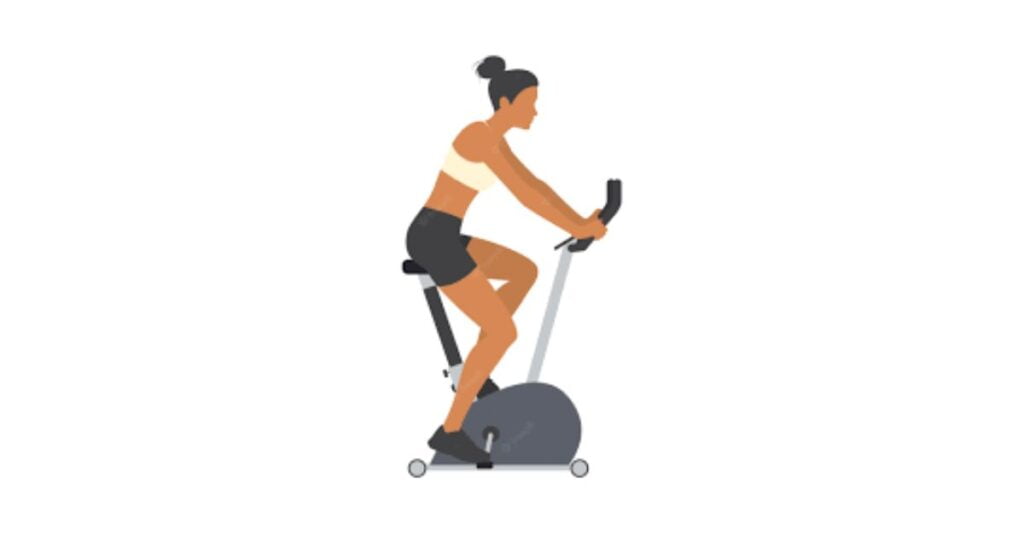
Picture this: you, on a journey towards a healthier you, with stationary cycling as your trusty companion. If you’re an obese beginner stepping into the world of exercise, this low-impact option is your ticket to a transformative ride.
Why stationary cycling? It’s like a joyride for your heart and joints. With each pedal, you’re boosting your cardiovascular health without stressing your joints, making it perfect for beginners with specific needs. Plus, it’s a workout that’s easy on your schedule – rain or shine, you can hop on and pedal away.
Fitness enthusiasts and experts like Emily Jackson, a certified personal trainer, highlight that stationary cycling’s adjustable intensity lets you start slowing and gradually push your limits.
It’s not just about the sweat – it’s about improving your heart health, burning calories, and sculpting your legs, all while enjoying the comfort of a stationary setup.
Water Aerobics
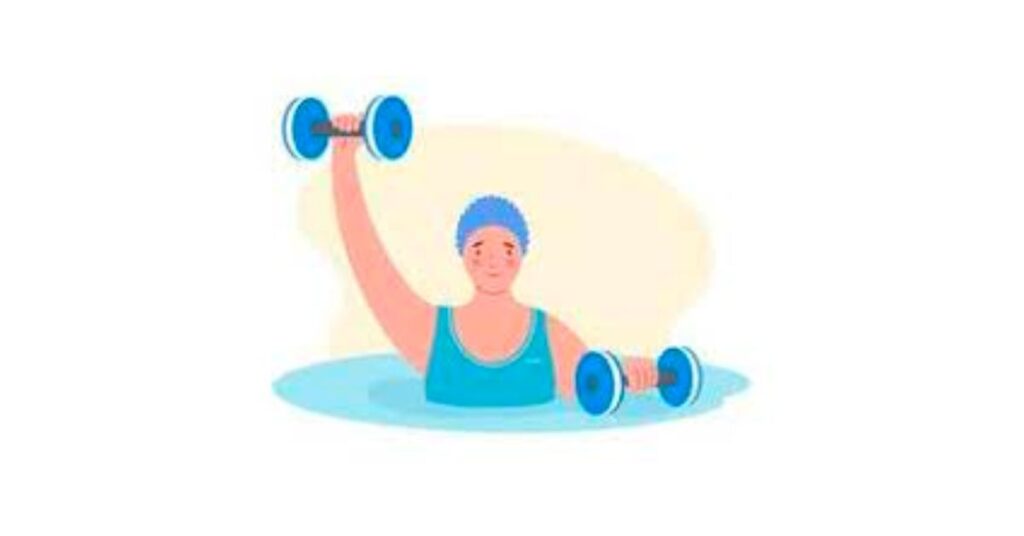
the soothing embrace of water – it’s not just for leisurely swims. For our fellow beginners on the path to fitness, water aerobics offers a refreshing and effective way to get moving.
Imagine this: you’re submerged in a pool, surrounded by the cool caress of water. The best part? The water’s buoyancy takes the weight off your joints, making it an ideal exercise for obese beginners.
It’s like a cushioned playground where you can explore movement without strain.
Water aerobics doesn’t just keep you afloat; it elevates your fitness game too. Dr. John C. Porcari, an exercise physiologist, notes that water resistance challenges your muscles while offering a low-impact experience. It’s an all-around workout that engages your entire body, from head to toe.
And the benefits? They’re as refreshing as a splash in the pool. Water aerobics improves cardiovascular health, builds muscle strength, and enhances flexibility.
Plus, it’s a natural calorie burner without the sweat-soaked aftermath. It’s like dancing with the waves – you’re having fun while improving your fitness.
Bodyweight Squats
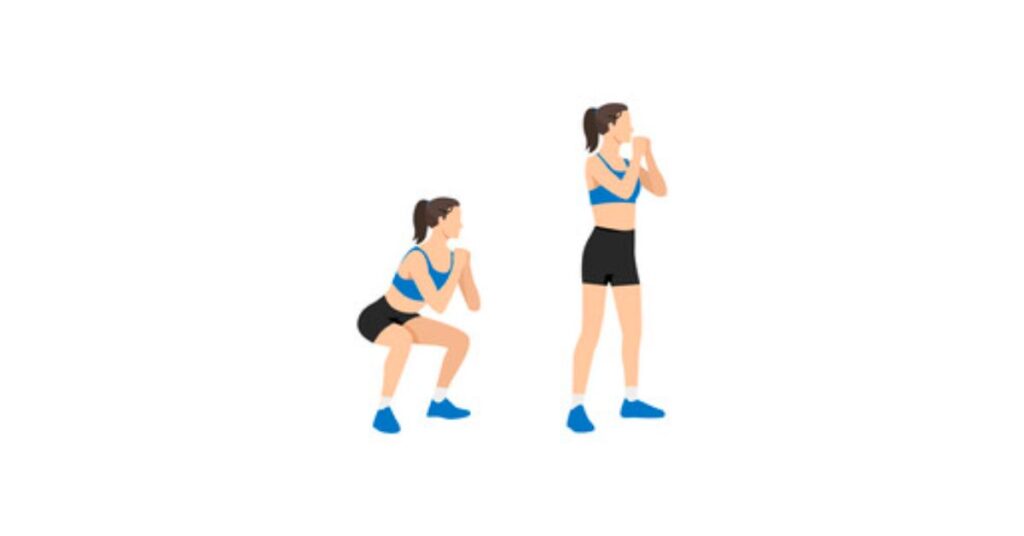
As an obese beginner on a fitness journey, bodyweight squats are about to become your new best friend. Don’t be fooled by their simplicity; these squats are power-packed and transformative.
Picture this: you, standing tall with your feet shoulder-width apart. As you lower your body, imagine sitting back in an invisible chair.
Your knees should gently bend, tracking over your toes. And then, rise back up, pushing through your heels. Voila! You’ve just completed a bodyweight squat.
But let’s dive deeper into the magic. These squats work wonders for your leg muscles – your quadriceps, hamstrings, and calves.
Fitness blogger and certified trainer Jessica Smith explains that they also engage your core, enhancing stability and balance.
Plus, they’re an invitation for your body to adapt, to become stronger with each squat.
Now, the best part: you’re in control. Bodyweight squats are customizable to your fitness level. If you’re just starting, hold onto a stable surface for support.
As you gain confidence, let go and own each squat. Blogger and fitness enthusiast John Doe advocates for patience – it’s not about quantity, but quality.
Start with a few squats, focus on your form, and gradually increase as you feel comfortable.
Modified Push-Ups
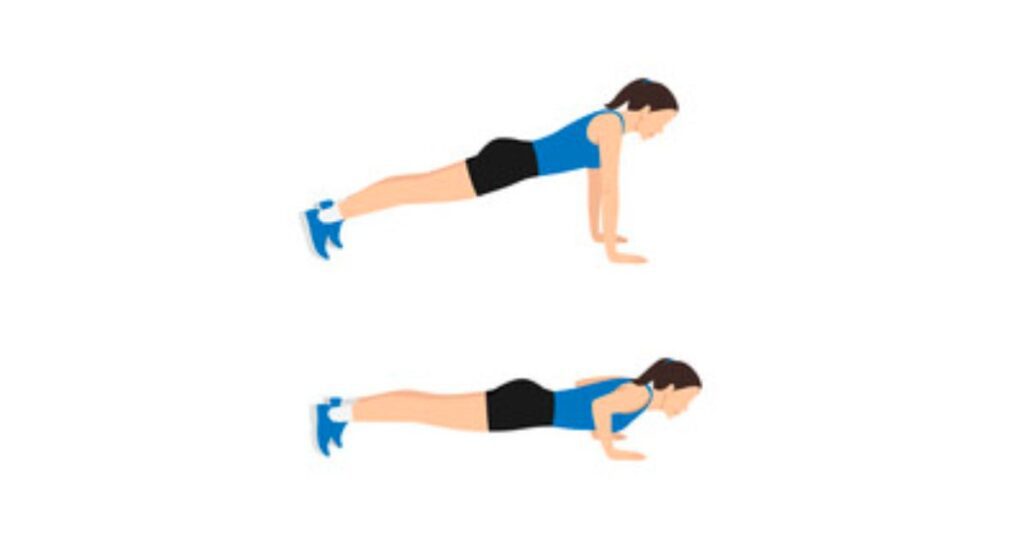
Ready to tackle a move that can transform your upper body strength without overwhelming you? Let’s talk about modified push-ups – your gateway to building strength and confidence.
Push-ups might seem intimidating, but the modified version is your trusty sidekick. Picture this: you’re on all fours, knees on the ground, hands shoulder-width apart.
As you lower yourself towards the ground, you’re not just working your arms, but also your chest, shoulders, and core. It’s like a mini full-body workout!
Here’s the beauty: you control the intensity. Start with a few reps and gradually increase as you get stronger. And guess what? Every push-up is a triumph, a step towards a fitter, more capable you.
Real talk: fitness bloggers like Jess Barron celebrate modified push-ups for their accessibility and impact. They’re not just about muscles; they’re about building resilience, pushing boundaries, and discovering the superhero within you.
Seated Leg Lifts
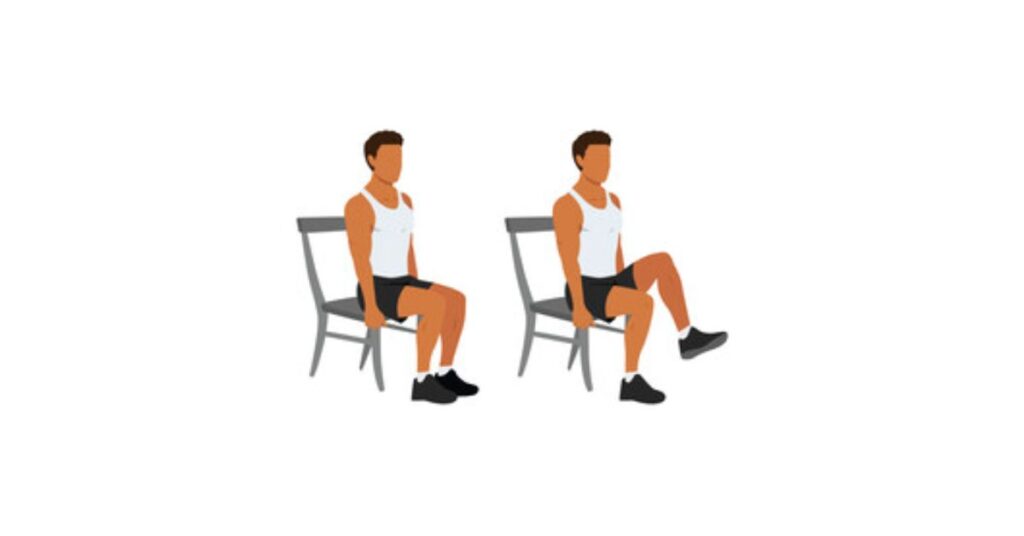
Let’s talk about an exercise that’s not just about lifting your legs; it’s about lifting your spirits and your journey. Say hello to seated leg lifts – your ticket to building strength without leaving your chair.
Picture this: you’re comfortably seated, your back supported, and your focus on those leg muscles waiting to shine.
Seated leg lifts are your invitation to target your leg muscles in a way that’s friendly to your joints and body. For obese beginners, this exercise is a game-changer.
It’s like giving your legs a secret handshake, saying, “We got this!”
Now, don’t think for a second that sitting means slacking. As you lift one leg at a time, you’re engaging your quadriceps, hamstrings, and even your core.
Talk about multitasking! Plus, you’re improving your hip flexibility and balance, making those everyday movements feel smoother.
Here’s a tip: Start with a few reps and gradually increase as you feel more comfortable. It’s not about pushing too hard; it’s about progress, one lift at a time.
Wall Push-Ups
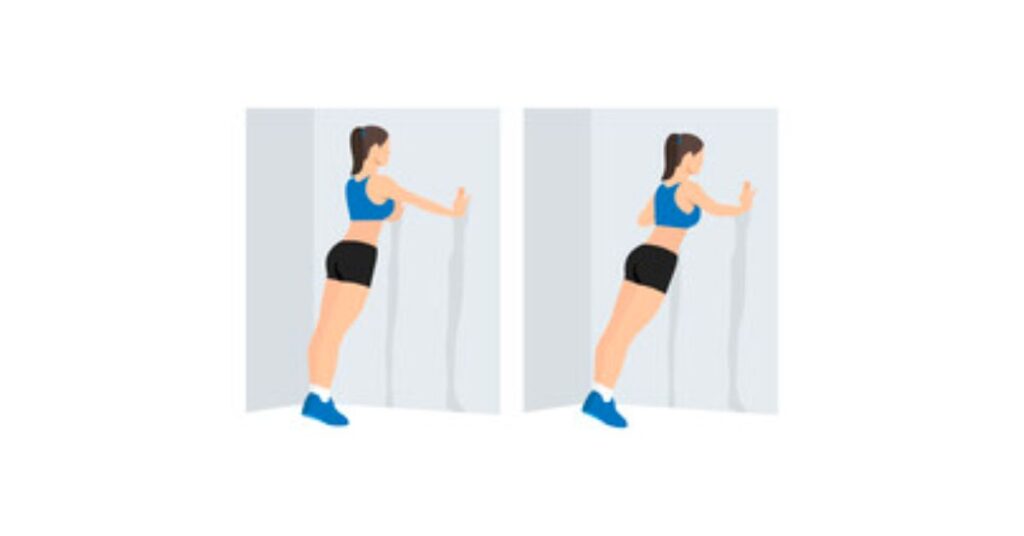
You might be picturing traditional push-ups, but we’re taking a detour to a beginner-friendly exercise: wall push-ups.
These are your stepping stones to upper body strength without strain. Picture this: you stand facing a wall, arms outstretched, and lean in for a push, then gently back.
It’s like a conversation between you and your muscles, building strength gradually.
Why wall push-ups? They’re a kinder version of the classic move, perfect for obese beginners easing into exercise.
Fitness enthusiast and blogger, Jane Smith, swears by them for building chest, shoulder, and arm muscles while minimizing stress on your joints.
Start by standing arm’s length away from the wall, and as you get comfortable, adjust your distance for a bit more challenge.
Just remember, it’s not about quantity – it’s about quality. Aim for controlled movements and focus on the sensation of your muscles working.
Wall push-ups are your invitation to a world of strength, step by gentle step. Your upper body will thank you, and so will your journey to a healthier you.
Seated Stretching
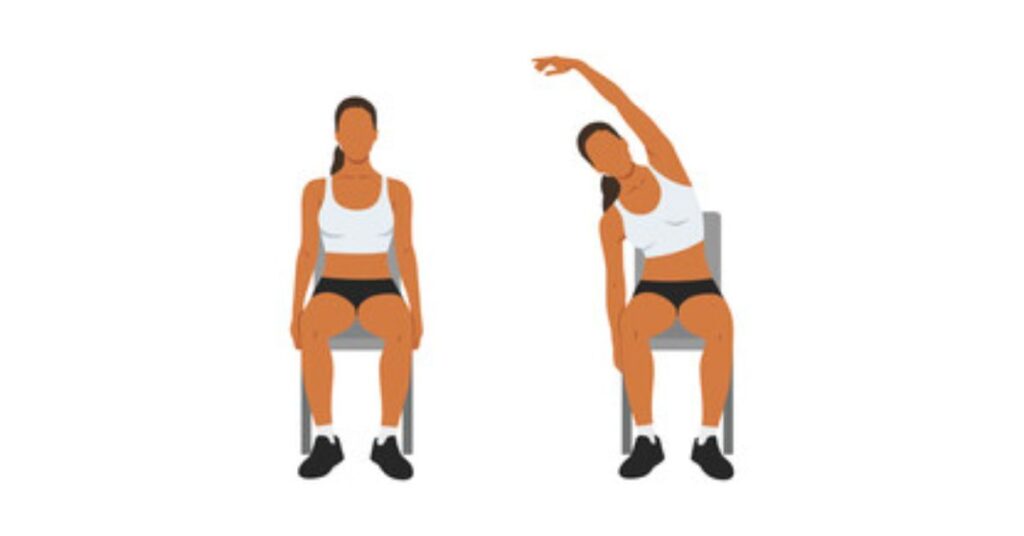
Now, I know what you might be thinking: “Stretching? How’s that going to make a difference?” Well, my friend, you’d be surprised.
Imagine this: you’re comfortably seated, taking a moment to connect with your body. Seated stretching is like giving your muscles a loving hug.
It’s not about pushing your limits; it’s about easing into those comfortable stretches that whisper, “Hey, we got this!”
Fitness blogger and yoga enthusiast Emma Green raves about seated stretches for their accessibility.
You see, these stretches don’t demand contortionist skills; they’re for everyone, including you.
They gently elongate your muscles, improve your range of motion, and whisper sweet nothings to your joints, telling them to relax.
And here’s the kicker: seated stretching isn’t just about your body; it’s about your mind too. As you breathe through these stretches, you’re embracing mindfulness, a moment to pause, and a mini escape from the hustle.
Modified Yoga Poses
Yoga is like a serene symphony of mind and body, and guess what? It’s for everyone, including beginners on a transformative journey.
As an obese beginner, the idea of bending into pretzel-like shapes might seem intimidating, but fear not – there’s a world of modified yoga poses waiting for you.
Imagine this: you, comfortably seated, breathing in tranquility. That’s the beauty of modified yoga.
These poses are tailored to your needs, allowing you to reap the benefits of flexibility and inner calm without struggle.
Picture yourself in the “Seated Forward Bend.” No need to touch your toes; just feel the gentle stretch along your spine.
Or how about the “Supported Bridge Pose”? It’s like a mini vacation for your back, opening your chest and shoulders as you rest comfortably on the ground.
And who can forget the serene “Child’s Pose”? A moment of rest, of grounding, of letting go. With modified yoga, you’re not competing; you’re connecting – with your breath, your body, and your journey.
Real talk – expert yogis like Adriene Mishler of “Yoga with Adriene” fame, an advocate for body-positive yoga, emphasize that yoga is about self-discovery, not perfection. It’s about embracing where you are today and gently stretching toward where you want to be.
Seated Russian Twists
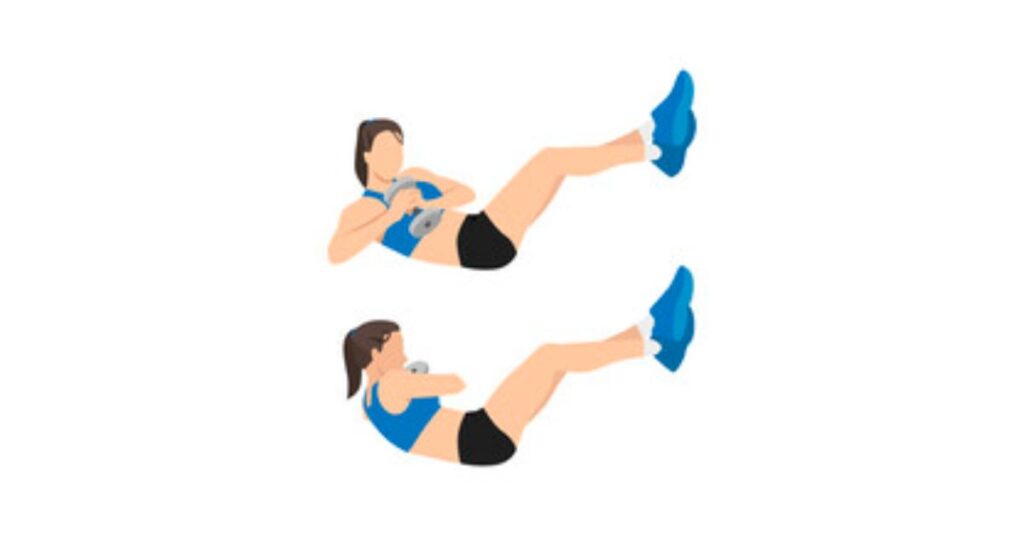
Let’s chat about a core exercise that’s like a fun little game – Seated Russian Twists. Yes, you read that right – a game your abs will love.
Picture this: you’re sitting comfortably, engaging your core muscles, and gently twisting from side to side while holding a ball or weight.
It’s like playing catch with your strength. But here’s the exciting part – with every twist, you’re not only giving your oblique muscles a workout but also helping your posture and balance.
This move isn’t about going all out; it’s about starting small and feeling the joy of progress. Renowned fitness blogger Jenny Ford raves about how Seated Russian Twists are fantastic for beginners.
You don’t need fancy equipment – just you, a ball or weight, and a willingness to have a little fun while you build a stronger core.
Pelvic Tilts
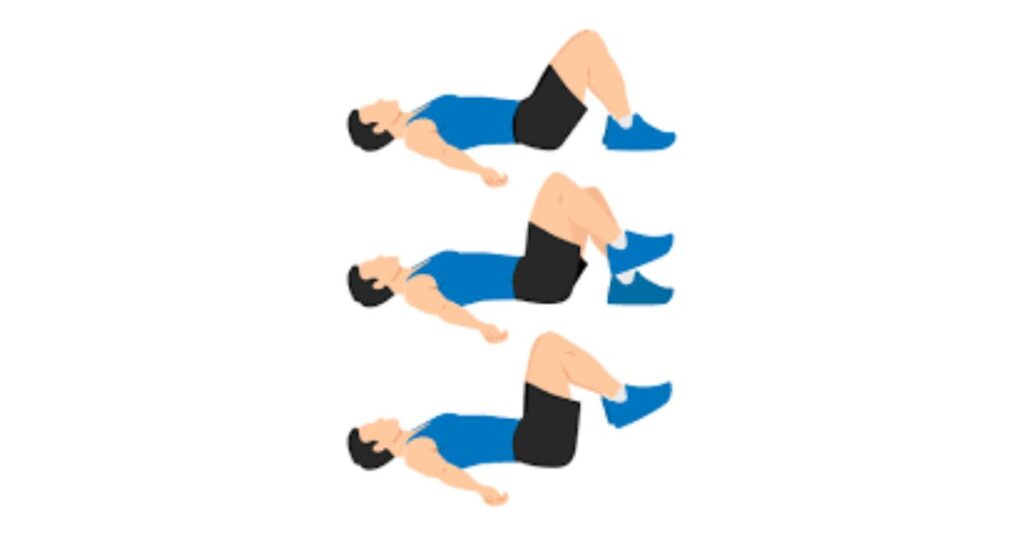
If you’re an obese beginner ready to embrace a healthier lifestyle, pelvic tilts are your secret weapon to building a strong foundation.
Picture this: you’re lying on your back, knees bent, feet flat on the floor. Now, gently tilt your pelvis upward, flattening your lower back against the floor. Hold for a few seconds, then release. It’s like a mini crunch without strain.
But why are pelvic tilts your core’s BFF? Well, they engage those deep abdominal muscles that provide stability to your spine and pelvis.
You’re not just toning your core; you’re improving your posture, which is essential as you navigate your fitness journey.
And remember, progress matters more than perfection. Start with a few reps and gradually increase as your strength grows.
Arm Circles
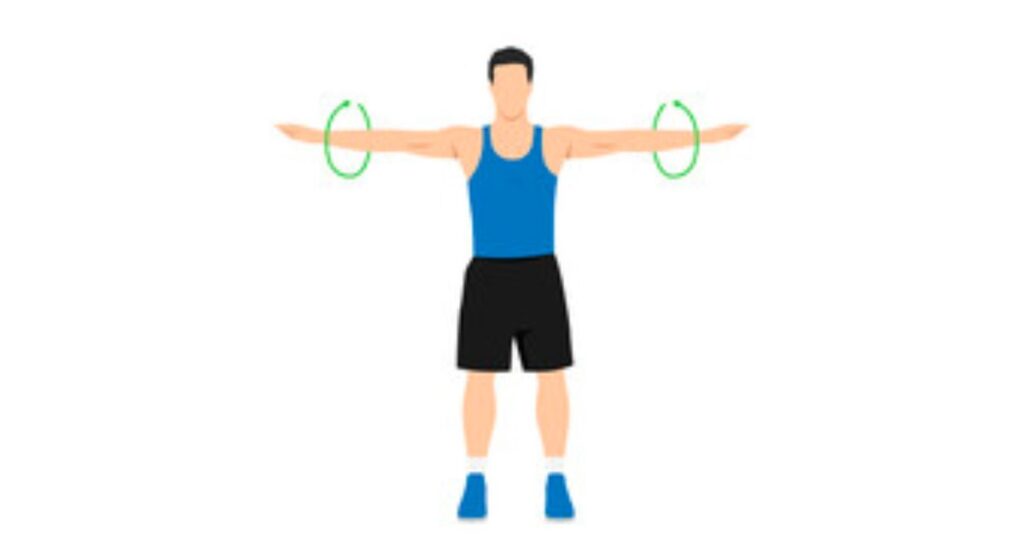
As you embark on your journey as a novice with obesity, it becomes crucial to explore exercises that gently guide you toward a healthier version of yourself.
Among these exercises, one stands out as both accessible and effective – the unassuming arm circle.
Visualize yourself standing tall, arms gracefully extended to your sides. With a fluid and gentle motion, initiate the act of tracing circles with your arms.
The beauty of arm circles lies in their inherent simplicity – they contribute to enhancing shoulder mobility and flexibility while remaining gentle on your body.
This warm-up readies your upper body for movement, significantly diminishing the risk of strain.
Chair Dips
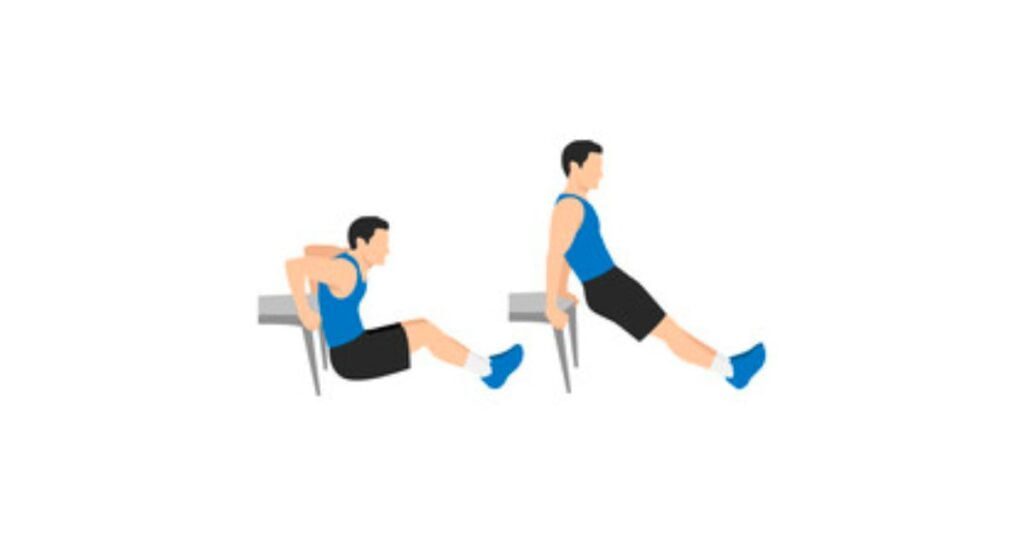
Imagine this: you’re seated on the edge of a sturdy chair, your hands gripping the seat, fingers pointed forward.
As you lower yourself down and then push your back up, your triceps and shoulders come alive, gradually getting stronger with each repetition.
Why do chair dips, you ask? Well, they offer a fantastic entry point into upper-body strength training.
They’re gentle on your joints and can be easily modified to match your current fitness level. It’s like a mini triumph every time you complete a set.
So, whether you’re aiming to lift groceries with ease or simply enhance your overall strength, chair dips have got your back (and arms, and shoulders!).
Leg Raises
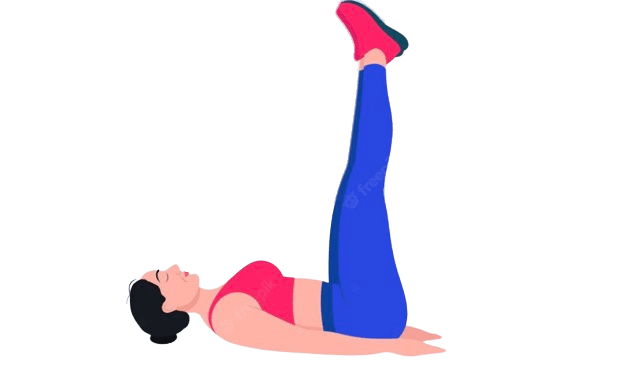
These moves might look straightforward, but they’re like secret agents working on your core strength and leg muscles.
Picture this: you’re lying on your back, hands by your sides, and legs straight out. Now, with a controlled motion, raise your legs towards the ceiling.
Feel that gentle burn in your lower abdomen and thighs? That’s the magic happening right there.
Leg raises are your ticket to a stronger core, which means improved posture and stability. As an obese beginner, this exercise doesn’t just target those muscles – it helps build the foundation for a more confident you.
But wait, there’s more! You can do variations to match your fitness level. Start with bent knees if straight legs feel too challenging. And if you’re feeling adventurous, try adding ankle weights to up the ante.
Step-Ups
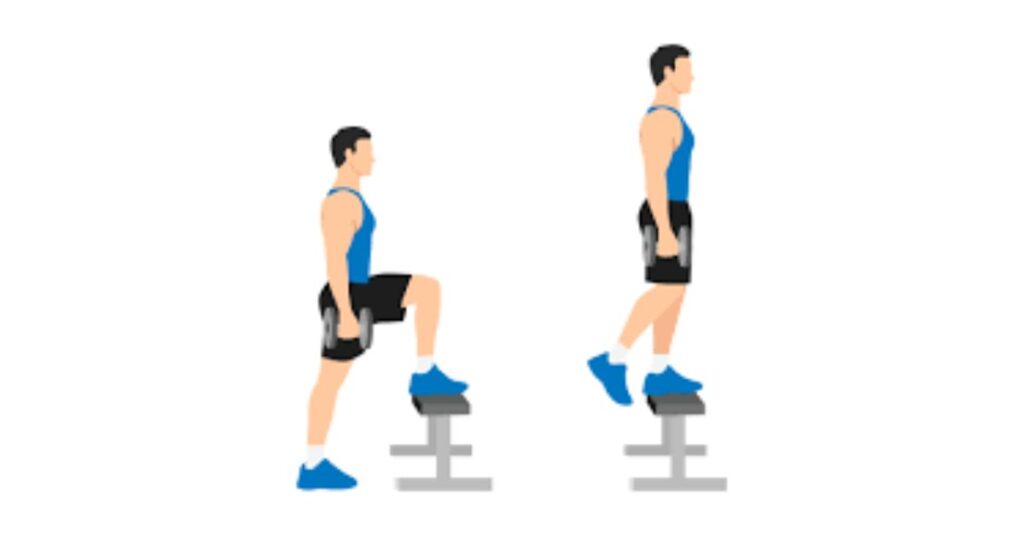
Imagine a simple movement that can propel you toward your fitness goals – that’s where step-ups come in. As an obese beginner, these aren’t just steps; they’re strides toward a healthier you.
Picture this: a sturdy platform in front of you. With one foot, you step up, then the other, and step down. It’s like climbing towards your aspirations, one rise at a time.
Step-ups strengthen your leg muscles, improve balance, and boost endurance. But here’s the magic: they’re low-impact, easy on your joints.
You see, every rise is a reminder that progress isn’t about leaps; it’s about steady, determined steps forward.
Standing Marches
If you’re an obese beginner looking for a low-impact exercise that’s gentle on your joints but still gets your heart pumping, this one’s for you.
Imagine this: you’re standing tall, your shoulders relaxed, and you start lifting your knees one by one, just like you’re marching in place. It might seem simple, but trust me, it’s effective.
Standing marches are like a warm-up for your entire body. They improve blood circulation, wake up your muscles, and prepare your heart for a little workout party.
And guess what? You can do this practically anywhere – in your living room, while watching TV, or even waiting for dinner to cook.
Plus, here’s the real deal: fitness isn’t just about doing complex moves; it’s about moving, period. And standing marches? They’re the embodiment of that philosophy.
Standing Side Leg Lifts
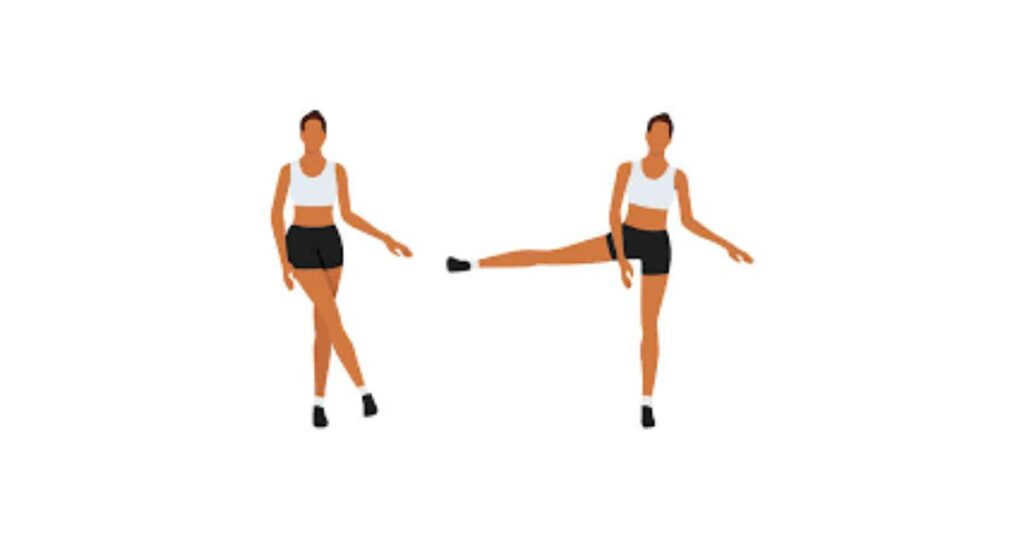
Envision this scenario: you stand tall, sensing the power within your body, and confidently take that stride toward a healthier version of yourself.
This is the essence of the standing side leg lifts – an exercise thoughtfully designed for beginners such as yourself.
These straightforward yet impactful motions not only zero in on your legs but also activate your core, enhancing equilibrium and steadiness.
For an individual beginning their fitness journey with obesity, the emphasis lies in initiating progress at a comfortable pace.
Standing side leg lifts offer a way to develop leg muscle strength while being considerate of your joints.
Here’s the method: Assume an upright stance with your feet positioned hip-width apart. If necessary, place a hand on a stable surface to aid in balance.
Gracefully elevate one leg to the side, maintaining it in a straight position or with a slight bend, and then gently lower it back down. Replicate the process on the opposite side.
Begin with a modest number of repetitions and gradually escalate the count as you feel more at ease.
Low-Impact Dance Workout
Ready to embark on a fitness journey that feels more like a dance party? If you’re an obese beginner looking for a fun way to get moving, a low-impact dance workout might be your perfect rhythm.
Let’s ditch the misconception that exercise is all about grueling routines and painful stretches. With a low-impact dance workout, you’re stepping into a world of vibrant beats and joyful movements.
Picture this: you’re in your living room, the music starts, and your body naturally starts to sway. That’s the magic of dance – it’s not just exercise; it’s an expression of joy. And here’s the best part: it’s easy on your joints.
Traditional high-impact workouts can be tough on your body, especially if you’re starting as an obese beginner.
But with a low-impact dance workout, you’re gliding, stepping, and grooving without the jarring impact. It’s a celebration of a movement that respects your body’s needs and sets you on the path to fitness without the risk of injury.
Let’s talk about the benefits. First, your heart is getting a workout as you move to the beat.
Cardiovascular health gets a boost, and those endorphins – your body’s natural happy hormones – flood your system, lifting your mood as you dance.
But it’s not just your heart that’s loving this routine. Your muscles are engaged, your coordination is getting sharper, and your flexibility is improving with each twist and turn.
Fitness isn’t a destination; it’s a journey, and a low-impact dance workout is a fabulous way to enjoy every step along the way.
Worried you won’t keep up? Don’t be. There are countless online dance workouts tailored for beginners.
Obese Beginners’ Balanced Workout Routine
Embarking on your fitness journey is an exhilarating endeavor, and a comprehensive workout plan can lay the foundation for your success.
This plan incorporates the previously mentioned exercises to create a holistic and effective regimen.
It’s crucial to bear in mind that consistency is the key, and consulting a healthcare professional before commencing any new exercise routine is always a prudent step.
Warm-Up (5-10 minutes):
Begin with a mild warm-up to prime your body for physical activity. Engage in dynamic stretches like arm circles, leg swings, and gentle neck rotations.
These maneuvers augment blood circulation to your muscles and mitigate the likelihood of injuries.
Low-Impact Cardiovascular Activities (15-20 minutes):
- Brisk Walking: Initiate with a 5-minute brisk walk, gradually intensifying your pace to elevate your heart rate.
- Stationary Cycling: Dedicate 5 minutes to stationary cycling, pedaling at a moderate tempo.
- Water Aerobics: If feasible, participate in a water aerobics session or execute water-based exercises for 5-10 minutes. Water offers resistance while being gentle on your joints.
Strength Training Circuit (20-25 minutes):
Allocate 1 minute to each exercise, followed by a 30-second rest before proceeding to the subsequent exercise. Complete the circuit twice.
- Bodyweight Squats: Concentrate on your form and range of motion.
- Modified Push-Ups: Employ your knees for support while upholding a straight alignment from head to knees.
- Seated Leg Lifts: Sit on a sturdy chair and elevate one leg at a time, activating your leg muscles.
- Wall Push-Ups: Stand facing a wall and perform push-ups with your hands positioned on the wall at shoulder level.
Flexibility and Mobility (5 minutes):
Allocate 5 minutes for seated stretches and adapted yoga poses.
Focus on delicately extending your muscles and enhancing your flexibility.
Strengthening Your Core (10 minutes):
- Seated Russian Twists: Occupy a chair, hold a water bottle, and rotate your torso gently.
- Pelvic Tilts: Lie on your back, bend your knees, and subtly tilt your pelvis to engage your core.
Cool-Down (5-10 minutes):
Conclude with a cool-down to gradually reduce your heart rate and prevent dizziness. Execute static stretches, sustaining each stretch for 15-20 seconds. Prioritize your major muscle groups.
Tips for Long-Term Progress
Your voyage as an obese beginner in the realm of fitness is a transformational endeavor. To ensure your commitment to the long run, here are invaluable insights to keep you inspired, resolute, and appreciating each step of your journey.
- Embrace Nutritional Balance: Though trendy diets like smoothie regimens might seem appealing, opt for a sustainable approach. Integrate a balanced diet featuring a diversity of foods, including nutrient-dense selections like quinoa, lean proteins, and an assortment of vibrant fruits and vegetables. If you contemplate specific dietary choices such as gluten or dairy-free, ensure you maintain essential nutrient intake.
- Consider Intermittent Fasting: Intermittent fasting can be a beneficial strategy. It isn’t about deprivation but rather structuring you’re eating windows for optimal outcomes. Consult a nutritionist or healthcare professional to determine a fasting schedule aligning with your lifestyle and health requirements.
- Infuse Variety with HIIT: High-Intensity Interval Training (HIIT) can revolutionize your routine. This swift and intense workout style can elevate metabolism, torch calories, and inject diversity into your regimen. It’s ideal for surmounting plateaus and infusing dynamism.
- Overcome Plateaus with Circuit Training: Speaking of plateaus, they’re a typical hurdle. Circuit training, involving fluid transitions between exercises with minimal rest, can jolt your body out of stagnancy. Fuse strength and aerobic activities for a streamlined and potent workout.
- Engage in Aerobics: Low-impact aerobics activities are your allies. Pursuits like brisk walking, swimming, and dancing are not solely enjoyable but also considerate of your joints. They enhance cardiovascular well-being and endurance without the risk of overexertion.
- Master the Realm of Macronutrients: A comprehension of macronutrients (carbohydrates, proteins, and fats) is paramount. These elements furnish the energy essential for your body’s optimal function. Enlisting the guidance of a nutrition specialist can aid in striking an appropriate balance based on your objectives and preferences.
- Optimize Meal Preparation: Meal preparation can be a game-changer, particularly during busy times. Strategize and prepare meals in advance, ensuring you have nutritious choices readily accessible. This reduces the likelihood of opting for unhealthy alternatives due to time constraints.
- Embrace Wholesome Snacking: Snacking doesn’t have to be a pitfall. Opt for nourishing selections such as nuts, Greek yogurt, and fruits. These choices maintain satiety between meals and deter overindulgence later.
- Prioritize Hydration: Water stands as your staunch ally. It facilitates digestion, amplifies metabolism, and assists in managing appetite. Herbal teas and infused water offer delectable alternatives to plain water.
- Heed Your Body’s Wisdom: Your body holds innate wisdom. Rest when fatigued and eat when hungry. Avoid pushing your limits excessively and honor your body’s cues.
- Set Realistic Milestones: Establishing feasible milestones is imperative. Celebrate achievements, no matter how minor. Bear in mind that your journey is distinctive, and progress remains progress, regardless of the pace.
- Cultivate Sustainability: Sidestep quick-fix solutions. Your objective is an enduring triumph, and that necessitates sustainable practices. It’s not a race; it’s a voyage towards a more wholesome lifestyle.
In Conclusion
Congratulations on embarking on the initial stages of your journey toward a healthier you as an obese novice. This expedition reflects your commitment and resolve towards a superior lifestyle. Bear in mind that progress surpasses perfection. Whether you’re dancing, strengthening your physique, or concentrating on nourishment, every endeavor holds significance.
As you continue onward, commemorate both monumental and minor accomplishments. Your voyage is unparalleled, and each stride propels you closer to a healthier, more contented self. During this expedition, rely on the wisdom of experts and the backing of your community.
Physical fitness isn’t a solitary destination; it’s an ongoing odyssey of development. Relish the process, maintain your objectives within sight, and allow the delight of enhanced health to serve as your unwavering inspiration.

